Gallary
- The Western Desert of Egypt is a vast expanse of land that stretches from the Mediterranean Sea to Sudan. It is home to some of the oldest and most fascinating archaeological sites in the world, including ancient Egyptian temples, tombs, and pyramids. The region has long been an important part of Egypt’s history and culture due to its strategic location along trade routes connecting Africa with Europe and Asia. Today, it remains an area rich in natural resources such as oil reserves but also offers travelers spectacular views across vast sandy plains dotted with oases filled with palm trees or towering sand dunes reaching high into clear blue skies.
- The desert landscape may appear barren at first glance but is actually teeming with life; there are over 200 species living here including gazelles, foxes, lizards and snakes as well as several bird species which make their homes among the rocky outcrops or hidden within lush vegetation found near water sources like springs or wells. There are also many plants which thrive in this harsh environment providing food for animals while others have medicinal properties used by local people for centuries past – frankincense being one example still widely traded today throughout North Africa’s markets!
- Exploring this remote corner can be done either on foot through guided tours around key sites such as Siwa Oasis where visitors can experience traditional Bedouin hospitality firsthand; alternatively camel safaris provide a more leisurely way to traverse these seemingly endless sands allowing you time soak up all that nature has offer – from stunning sunrises & sunsets reflecting off golden dunes during day trips away from city lights right up until star-filled night skies above campfires under moonlit nights! Whatever your chosen method though you’re sure find yourself captivated by beauty & mystery surrounding Western Desert Egypt making any journey truly unforgettable one!
- Mohamed Ramadan, a safari expert and owner of one of the tourism companies, describes the White Desert as one of the most important safari areas in Egypt, saying: On a group of tombs, rare caves, the remains of ancient mummies and carved inscriptions, in addition to wild animals in the region such as deer, foxes and some types of birds. In the reserve, the tourist can use the camels available there, in addition to the fact that the tourist there can stop at the Black Desert, which is characterized by the presence of molten basalt rocks in it, in addition to the proximity of the place to the site of the discovery of the oldest dinosaur in the world. Therefore, a decision was issued to declare it a reserve in 2002, in addition to its proximity to an oasis. Farara, where the distance between them is only 38 km.
- Maghawry Diab, an Egyptian hydrologist and environmental expert, explains the distinction of this desert by saying: “This desert was formed about 80 million years ago, as that region represents the seabed that covered that region in that time period, and the white desert is unique in the presence of the karst phenomenon, which is a phenomenon Ancient geology formed over the centuries many caves that shrank due to erosion factors, leaving only crystals of calcite ore in the form of stalagmites (high areas), and with shapes with peaks called “crow’s nest”, and the lower part of them consists of white chalk, which is found It has invertebrate fossils and shark teeth, and the chalky rocks reflect the marine sedimentation environment, as well as the geological formations that date back to the Paleocene era and there are remains of fossilized trees and perennial acacia trees. This is indeed the area like an open museum of the desert, fossils and wildlife, besides the beauty of the sand dune landscapes and the geological formations of the bright limestone rocks The whiteness and its distinct fossils
- The land of legends, or wonders as the Egyptians call it, is the white desert adjacent to the Egyptian-Libyan border, which fascinates tourists with its amazing limestone rock formations.
- The place is about 500 kilometers southwest of Cairo, and only a few tourists visit it individually, either with the aim of hunting or with the aim of enjoying the charming and unique scenery. A visit there takes place only with a guide from the Bedouins of the region who know its paths and mysteries, and benefit from some money in return for providing their services and renting their four-wheel-drive cars to the incoming tourists.
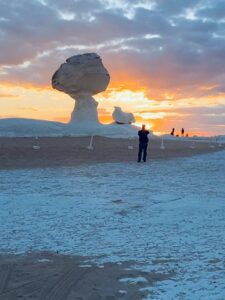
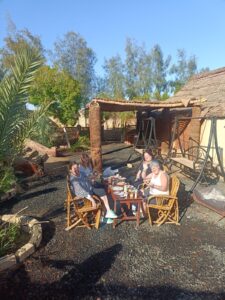
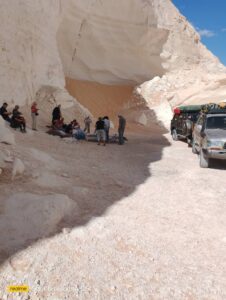
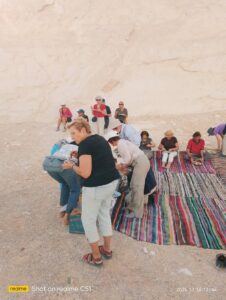
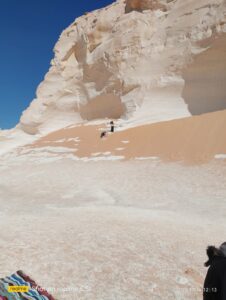
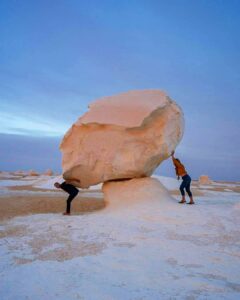
Get In Touch
- Bawiti , Egypt
- (02) 01007459591- (02)01227922728
- info@whitedesertegypt.com
Find Us
Send us a message
Lorem ipsum dolor sit amet, consectetur adipiscing elit dolor.